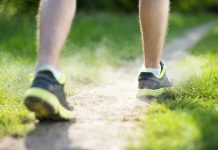
As we age, our muscles tend to weaken and lose mass.
This can lead to a number of health problems, including reduced mobility, increased risk of falls, and a lower quality of life.
However, there are ways to keep muscles strong in older people. In this article, we’ll explore some strategies for maintaining muscle strength and function as we age.
Resistance Training
Resistance training, also known as strength training, involves using weights, resistance bands, or your own body weight to challenge your muscles.
This type of exercise can help build and maintain muscle mass, as well as improve overall strength and function.
Older adults should aim to do resistance training exercises at least twice a week, targeting all major muscle groups.
When starting a resistance training program, it’s important to work with a qualified fitness professional to ensure proper form and technique.
In addition, it’s important to start with lighter weights or resistance bands and gradually increase the intensity over time.
Some effective resistance training exercises for older adults include squats, lunges, push-ups, and seated rows.
Aerobic Exercise
Aerobic exercise, such as brisk walking, cycling, or swimming, can also help maintain muscle strength and function in older adults.
This type of exercise can improve cardiovascular health, which is important for maintaining overall physical function.
Aerobic exercise can also help improve muscle endurance, which is important for activities of daily living, such as walking up stairs or carrying groceries.
Older adults should aim to do at least 150 minutes of moderate-intensity aerobic exercise or 75 minutes of vigorous-intensity aerobic exercise per week.
It’s important to start with shorter bouts of exercise and gradually increase the duration and intensity over time. In addition, it’s important to choose activities that are enjoyable and can be sustained over the long term.
Flexibility and Balance Exercises
Flexibility and balance exercises can help improve joint mobility and reduce the risk of falls in older adults. These types of exercises can also help maintain muscle function and prevent injury.
Some effective flexibility and balance exercises for older adults include yoga, tai chi, and balance training exercises, such as standing on one leg or walking heel-to-toe.
Older adults should aim to do flexibility and balance exercises at least two to three times per week.
It’s important to start with exercises that are safe and comfortable, and to gradually increase the difficulty over time.
In addition, it’s important to work with a qualified fitness professional to ensure proper form and technique.
Adequate Nutrition
Adequate nutrition is essential for maintaining muscle strength and function in older adults.
Older adults should aim to consume a balanced diet that includes adequate protein, which is important for building and maintaining muscle mass. Good sources of protein include lean meats, fish, poultry, beans, and nuts.
In addition, older adults should aim to consume a variety of fruits and vegetables, whole grains, and healthy fats, which can help provide the nutrients needed for optimal muscle function.
It’s also important to stay hydrated, as dehydration can lead to muscle weakness and cramping.
- Rest and Recovery
Rest and recovery are important components of any exercise program, especially for older adults.
Older adults may need more time to recover between workouts and should listen to their bodies and adjust their exercise routine accordingly.
It’s also important to get adequate sleep, which can help support muscle recovery and repair.
In addition, older adults should be mindful of any aches, pains, or injuries, and seek medical attention if necessary. Ignoring pain or pushing through an injury can lead to further damage and delay the recovery process.
Conclusion
Maintaining muscle strength and function is important for overall health and well-being in older adults.
By incorporating resistance training, aerobic exercise, flexibility and balance exercises, adequate nutrition, and rest and recovery into their lifestyle, older adults can help maintain muscle mass, improve physical function, and reduce the risk of falls and injuries.
If you care about nutrition, please read studies about how the Mediterranean diet could protect your brain health, and this plant nutrient could help reduce high blood pressure.
For more information about nutrition, please see recent studies that olive oil may help you live longer, and vitamin D could help lower the risk of autoimmune diseases.
Copyright © 2023 Knowridge Science Report. All rights reserved.



